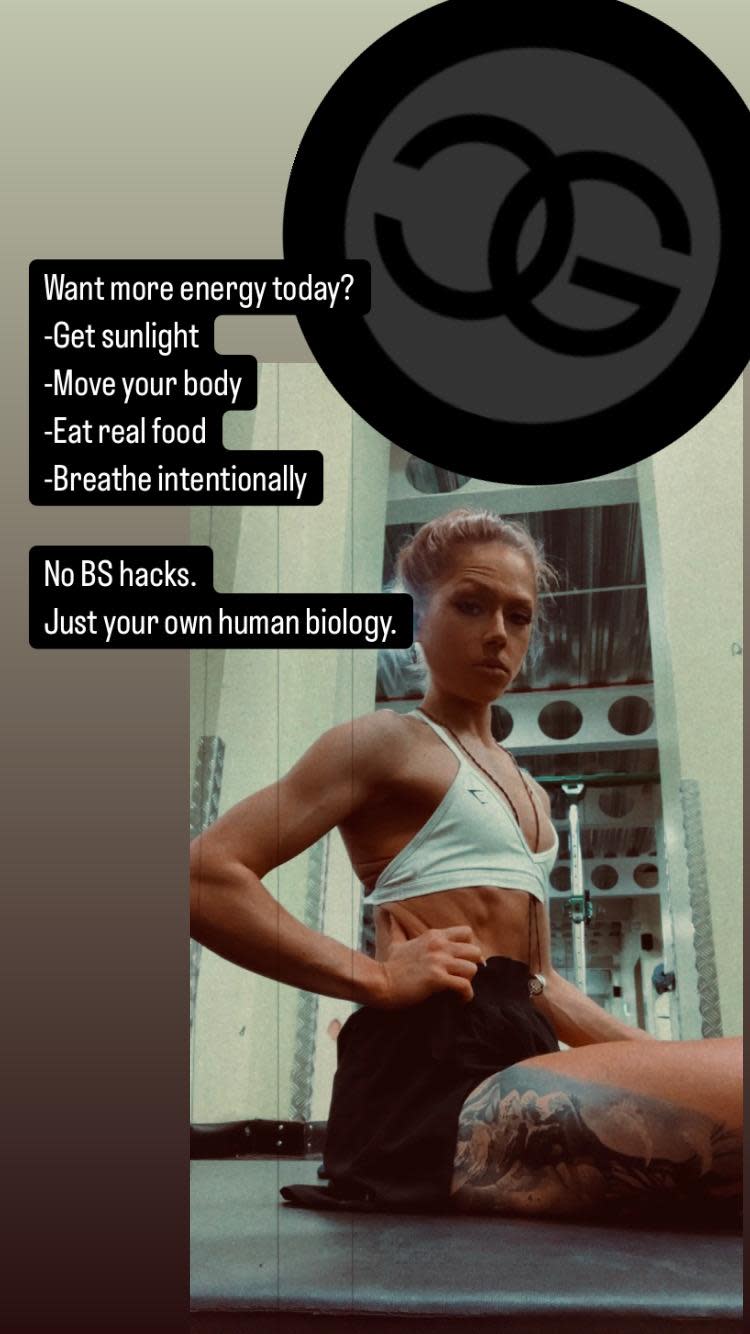Micronutrients



Counting one’s own macros…legitimate, well-practiced and for certain populations, relevant. Counting one’s micronutrients… absurd, irksome and to be frank, impossible. However, a broad understanding as to our own requirements, along with a variety of means by which to obtain them is a benefit of which many underestimate… thus resulting in hugely detrimental repercussions to a myriad of performance factors; whether it be body composition, a muscle’s contractile ability, the hypertrophic capability of a muscle fibre, or simply the athlete’s energy, (and overall attitude, outlook and mental capacity) all will be influenced by their micronutrient balance. Micronutrients can be categorised into; vitamins and minerals. Minerals can then be further categorised into; macrominerals, (Na, K, Ca, Mg) and microminerals, (Cu, Fl, Fe, Se, Zn). Whilst vitamins can be further categorised into; water soluble, (B, C, found in the fluid portion of the body and do not accumulate to a large degree thus replenishment and ingestion is necessary at an estimated frequency of 8-14 hours, with any excess excreted in the urine) and fat soluble, (A, D, E, and K, which, contrary to water soluble, are stored in the lipid portion of the body and thus can accumulate to a larger degree. Thus, negating the requirement for regimental daily consumption and replenishment, however if consumed in excess quantities CAN cause toxicity). We shall commence with Vitamins…
Vitamin A. Found in animal, (liver, whole milk, oily fish) food in the form of retinol. Found in plant, (green leafy veg and orange fruits) foods as beta carotene; however only around 15-50% is effectively converted for usage within the body. Importance? Vision in dim light, (your mummy wasn’t lying to you…eat your carrots), antioxidant properties, bone growth, maintenance of tissues such as; connective, epithelial, muscle and nervous. Vitamin A is also praised for anti-oxidative capacities however studies such as Wald et al could be inferred to only heighten the supremacy of Vitamins C and E in the game of anti-oxidant top trumps. RNI? 700ug/d for men. 600ug/d for women. Equating to about 15g of liver…so no excuse.
Vitamin D. Found in…the sun! Well, and sunbeds, but I shan’t preach or condone the use of such atrocities of course. Also found, in small amounts, within oily fish, egg yolks, (STOP throwing them away for your 50 egg white omelettes you protein junkies) butter and milk, as well as fortified cereals. Strengthening the case for my beloved crunchy nut. I must admit that to reach the 10IU/d RNI, one must really love cornflakes, as at only 1.14ug per 30g bowl it remains some challenge. Unless you have it with 1 litre of whole milk, in which case, you’re there! Importance? Improves immune function, improves bone health VIA supporting Ca absorption along with potentially improving strength and fat loss, (shown through Tomlinson et al in 2015 and Ortega et al in 2008). Links to the reduction in bone loss and fracture risk among the elderly along and reduced depressive symptoms can all be associated with sufficient vitamin A levels. Holick in 2007 associates deficiencies with the development of CVD, cancer, IBD and AI disorders, whilst general deficiency symptoms are accepted as fatigue, muscle weakness, aches in joints, rickets in children and osteoporosis in adults.…back to the sunbed I go then. In terms of the gains…no physical performance enhancement has been noted from vitamin D supplementation, although a tan makes anyone’s abs better with no training commitment whatsoever.
Vitamin E. Who knows why we need this, however as formerly mentioned it does act as an antioxidant*. (Ekanayake-Mudiyanselage et al 2005 shows the reduction in oxidation within the outer layers of the skin) As one only needs to eat 20 almonds to obtain the 4mg/d RNI it does seem better safe than sorry. Other sources range from; vegetable oils, unprocessed cereal grains, nuts, fruits, vegetables and meat. * Peternelj & Coombes 2011, Paulsen et al 2014, Theodorou et al 2011 and Bobeuf et al 2011 show just a handful of the perpetual conflicts within the findings surrounding the antioxidant properties of vitamins. The reduction in oxidative stress does prove to be apparent concurrently, however the literature to back-up this notion is somewhat more conflicting.
Vitamin K. Mainly sourced from; green leafy vegetables, olive oil, chicken, butter and, once again, the humble egg yolk. Imperative to blood clotting, with deficiencies resulting the severe bleeding, as well as being important in the formation of bones. Vitamin K can be produced within the gut bacteria, (in the form of menaquinone-n/Vitamin K2).
Vitamin C. One of the 2 aforementioned water-soluble vitamins. In the unnecessary words of a highbrow, Ascorbic acid. Known predominantly for its function as an antioxidant thus, unsurprisingly, its links with immunology and wound healing. Other functions relate to that of the absorption of Fe, the synthesis of carnitine, (the transport molecule for fatty acids into the mitochondria) along with the formation and maintenance of collagen… antiwrinkle crowd listen up, (collagen being a component of tendons, ligaments, bones and blood vessels). Vitamin C cannot be synthesised within the human body and thus must be obtained exogenously through fruits and vegetables such as oranges, lemons, limes, peppers etc, although overcooking can easily destroy the nutrient. Lack of vitamin C can lead to scurvy so one should be aware of the RNI being around 40mg/d for both men and women.
Vitamins B-complex. Although the name does imply complexity, (to which it is apt given the copious number of forms there are) the main premise remains elementary; to help the body convert food into energy. Simples. Below I have filched a table from Martin Mcdonald who has clearly laid out the involvement of each of the forms within the human body…so thank you Mr Mcdonald.
B6 Thiamine; reactions in involving removal of CO2.
B2 Riboflavin; works as an antioxidant
B3 Niacin; helps the body make hormones in adrenal glands eg cortisol
B5 Pantothenic acid; aids production of red blood cells and hormones, synthesises cholesterol
B6 Pyridoxine; helps make neurotransmitters, brain development and function, helps make hormones eg adrenaline
B9 Folate; brain function, DNA production, red blood cell production, supports Fe. Example foods include; leafy greens, asparagus, broccoli, avocado and citrus fruits. Regularly RNI around 200ug/d for men and women…apart from in pregnancy at which time one should aim for 300ug/d.
B12 Cobalamin; healthy nerve cells, production of DNA and red blood cells. Example foods include; shellfish, liver, fish, red meat, dairy products and fortified products. Deficiencies shown through fatigue, feeling faint, breathlessness and headaches.
Now we shall continue down the nutritional rabbit hole and move on to Minerals…
Fe; lies within as a component of hundreds of proteins and enzymes within the body…the heme within hemoglobin and myoglobin, (oxygen transport molecule within red blood cells and muscles in that order). Hence… neatly leading us on to the related deficiencies which include anaemia, dizziness, fatigue and paleness…all unsurprising when we consider the preceding mention of it’s function. Sources can be obtained through either heme, (meat) or non-heme, (plant based), although there does remain 10-30% discrepancy in terms of the absorption level which one must remain prudent to when considering food choices and quantity of consumption…should one find only 2-20% of Fe from spinach is absorbed then even Popeye would struggle to chow down on sufficient levels.
Ca; ‘helps bones grow stronger-er’, thank you petit filous, I needn’t say more in respect to the most abundant mineral within the body. Although there are a few more, eg; regulation of muscle contractions and helping blood clot normally. To ensure all of this the body will obtain it from bone stores should consumption be insufficient, thus leading to the issues of rickets in children, and osteoporosis in adults. Confusion, muscle spasms and brittle nails have also been noted in cases of low Ca levels. There is a positive note among this though… Kersteller et al in 2011 has helped to quash much of the scaremongering when his study ended in the conclusion that high protein diets do not influence calcium excretion… or in his words… ‘‘High-protein intake may positively impact bone health by several mechanisms, including calcium absorption, stimulation of the secretion of IGF-1, and enhancement of lean body mass’.
Zn; Used for the production of enzymes for digestion, (100 different enzymes involved in catalytic reactions are also zinc dependent), but in order to grasp the attention of a wider audience, also used for testosterone production… Prasad et al 1996 and Koehle 2009 dismally showed however that this Zn is only seen to increase testosterone if you are zinc deficient; switching the contents of one’s ignominious steroid needle to zinc is unlikely to elicit the same results, shame, back to it then. The RNI is around 9.5mg/d for males and 7mg/d for females thus equating to roughly 250-300g of beef, or should we reference popeye once more, 1600g of spinach, would that even fit in a nutribullet…? Symptoms such as diarrhoea, impaired growth, immune and cognitive function can all be attributed to Zn deficiency. Should one ask google however, then there’s probably a myriad of other possible ailments, infirmities, maladies and afflictions… so as with any of the above don’t be scared, self-diagnosis is a perilous road to go down.
Mg; one of my favourites, you needn’t know this, but now you do, and here’s why. Responsible for the activation of the enzymes involved in protein synthesis, (if you want to build muscle, no matter Booty or Bi’s then you need this) and responsible for the regulation of DNA thus impacting upon cell growth and reproduction. It is involved in more than 300 essential metabolic reactions, (many of these reactions involved with the metabolism of protein, carbohydrate, fats and nucleic acids) within the human body, (the approximate 25g of Mg within the body is comprised of 60% skeletal and 27% muscle) thus accentuating how deficiencies could easily lead to expressions of weakness, fatigue, higher blood pressure, muscle cramps as well as the knock on affects to the levels of Ca and K, (Swaminathan 2003; the active transport of the two minerals across the cell membranes requires Mg) should Mg levels be chronically impaired. Held et al and Nielsen et al 2010 also suggest, although conclusive statements cannot be made, that Mg may improve sleep quality.
Na; ‘Both low sodium intakes and high sodium intakes are associated with increased mortality, consistent with a U-shaped association between sodium intake and health outcomes.’ As shown within the literature from Graudelet al. (2014), ‘Increased salt intake from 4g to 15g found borderline significant increases in 24-h systolic blood pressure, P¯0.06’, extracted from Foo et al. (1998). The above encompasses a lot of the benefits of the mineral more commonly manifested as salt, as well as squashes many of the exaggerated scaremongering flying around the modern media, (they must be credited though as it has drawn attention to the fact that the majority of one’s sodium intake is through processed foods, which is a whole can of worms that does not warrant the time needed for the debate). The RNI for sodium intake currently stands at 1.6g; in terms of equating this to salt one simply calculates by multiplying the sodium content of the food in question by 2.4. In terms of performance, one should always recall Na due to its potentially to help prevent the onset of muscle cramps.
Don’t be disillusioned, not all have been mentioned, an awareness of others is a wise tool to have, however due to the vast array of functions, sources and potential negative repercussions of insufficient levels one can start to see why guidelines extend to simply eating a variety of foods, from a variety of different sources in order to help minimise any nutrient deficiencies outlined above. IIFYM, SAD, Vegan, Keto, Pescatarian or any other wanton fad is fine as long as one can ensure they account for colours, flavours, fruits, vegetables, dairy and meat a-like…and consume a lot of spinach… apparently…?

